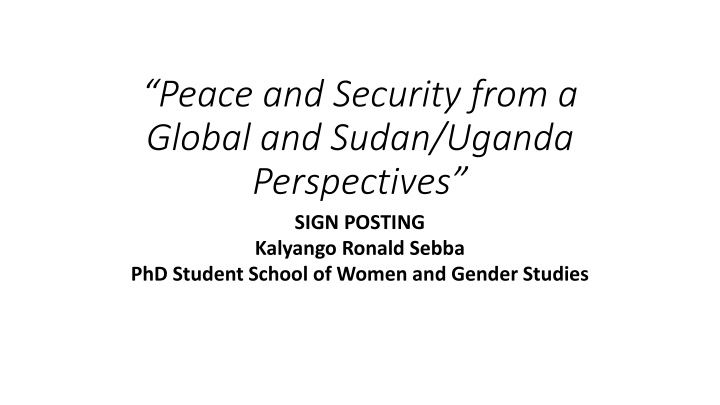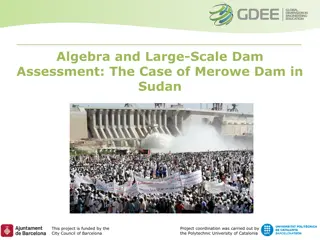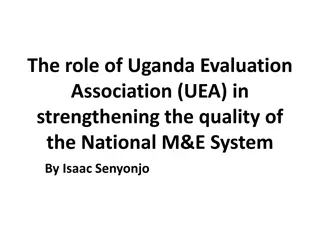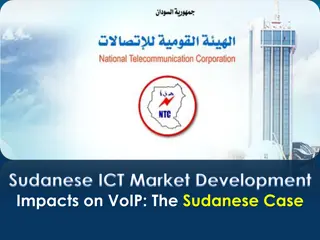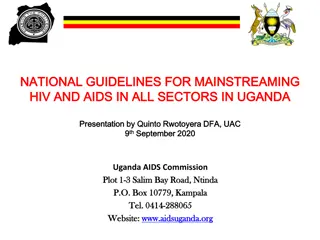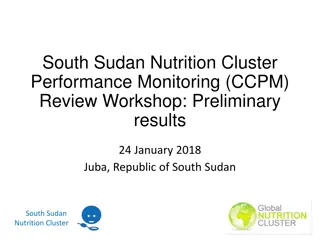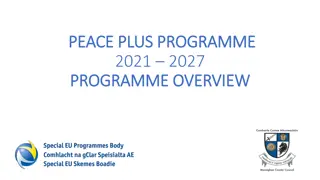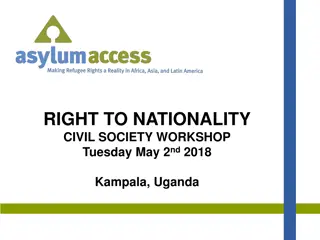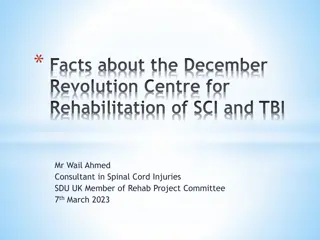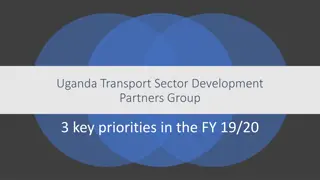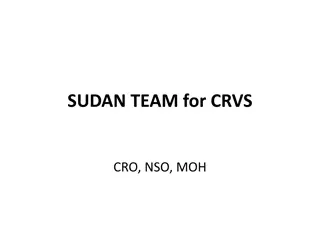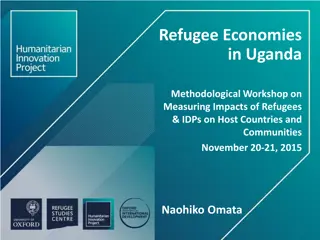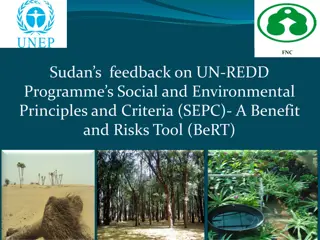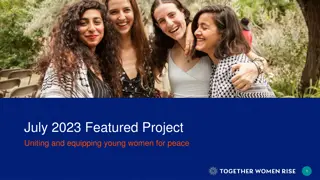Women's Role in Peace and Security: A Global and Sudan/Uganda Perspective
This post by Kalyango Ronald Sebba, a PhD student in the School of Women and Gender Studies, discusses the assumptions, results, and implications of women's involvement in peace and security efforts. It highlights how pre-war subordination of women, limited female participation in peace negotiations, and UNSC Resolution 1325 impact global and regional security dynamics.
Download Presentation

Please find below an Image/Link to download the presentation.
The content on the website is provided AS IS for your information and personal use only. It may not be sold, licensed, or shared on other websites without obtaining consent from the author.If you encounter any issues during the download, it is possible that the publisher has removed the file from their server.
You are allowed to download the files provided on this website for personal or commercial use, subject to the condition that they are used lawfully. All files are the property of their respective owners.
The content on the website is provided AS IS for your information and personal use only. It may not be sold, licensed, or shared on other websites without obtaining consent from the author.
E N D
Presentation Transcript
Peace and Security from a Global and Sudan/Uganda Perspectives SIGN POSTING Kalyango Ronald Sebba PhD Student School of Women and Gender Studies
Assumptions of women peace and security The pre-war subordination of women both by individual men and by masculinised state institutions has nothing to do with the sorts of militarised thinking and militarised relationships that lead to repeated outbreaks of armed conflict; Wars are merely conflicts between men with no investigation of masculinities nor how the politics of femininity and masculinity play out in women s lives and on their bodies in war time; no concern for what women do amidst wars. State and international actors imagine that people to worry about in the post war era are demobilised male soldiers. Failed demobilisation of men is seen as risk factor for the return to conflict while women in the post war period are widely assumed to return to their proper domestic spheres and grieve over their war time losses in private;
Results of this thinking The above assumptions produce masculinised ceasefire and peace negotiations- there is limited women involvement nor articulation of their issues in peace negotiations and agreements. Political observers are left surprised at the subsequent outbreak of new conflicts; Lead to the creation of familial and political institutions in post-war societies Assumptions have sustained a UN/ national machinery for women that is (has been) fragmented toothless and chronically under funded;
Security Council Resolution 1325 The UN Security Council Resolution 1325 explicitly stresses the role that women play in preventing and resolving conflict and in efforts to build peace by ensuring the increased representation of women at all decision-making levels in national, regional and international institutions and mechanisms for the prevention, management, and resolution of conflict. The resolution reaffirms the UN commitment in the Beijing Declaration and Platform for Action, 1995 to increase the participation of women in conflict resolution at decision-making levels and protection of women living in situations of armed conflict.
Security Council Resolution 1325 SCR 1325 has moved international discourse and debate on women s role in international security forward; It has redefined the position of women in the context of conflict. It has made visible women s agency and political activism and; Promoted an expanded acceptance of the various roles women may play in conflict.
SCR1325 The resolution comprises eighteen operational paragraphs that broadly call for: 1) The increased participation of women in decision-making in the prevention, management and resolution of conflict; 2) The protection of women from human rights abuses such as gender based violence; and 3) The integration of gender mainstreaming and gender perspectives in all responses to conflict, including the training of all personnel within peace keeping missions as well as the staff members of UN missions.
SCR 1325 It promotes women as equal participants in all aspects of international peace and security and Emphasises the need to integrate gendered and inclusive approaches to sustainable peace and development, while highlighting the continued targeting of women for egregious abuses in conflict situations.
Critique of SCR 1325 Although the resolution has the potential to reform the structures and systems on which current peace-making and peace-building rests, doubts persist as to whether the reforms provided for in SCR 1325 are in practice being addressed, let alone implemented. The widely acknowledged weakness of this resolution is that there is no component that compels states to act. The lack of monitoring and reporting mechanisms and the absence of clearly identified targets that would need to be attained within pre- determined time frames are also problematic. Slow and ad-hoc measures are adopted by the international community to implement SCR 1325 this has prompted the development of action plans as a possible way forward.
Action Plans Action plans represent a relatively new approach to the challenge of ensuring the implementation of resolutions and are regarded as a practical means through which states can demonstrate the steps they have taken to satisfy their obligations under the resolution. Action plans are divided into: National Action Plans-the UN Secretary General stressed that governments have the primary responsibility for implementing the resolution. Institutional action plans-UN, EU and AU have institutionalised
National Action Plans To date, nineteen (19) AU Member States have developed and adopted 1325 National Action Plans (NAPs). These include Burkina Faso; Burundi; Central African Republic; Cote D Ivoire; Democratic Republic of Congo; The Gambia; Ghana; Guinea; Guinea Bissau; Kenya; Liberia; Mali; Nigeria; Rwanda; Senegal; Sierra Leone; South Sudan; Togo; Uganda. In addition to NAPs a range of other measures have been put in place for implementation of the WPS agenda: To mainstream into wider national policies, including for instance development plans (or poverty reduction strategies), National security and defense strategies, National strategies for the advancement of women and other similar frameworks.
Who participates in developing National Action Plans Civil society organisations ideally Civil Society Organisations Should play an integral part in the in the planning process; nevertheless, there are potential risks with this approach since civil society also plays a critical monitoring role that is often better achieved with distance. A balance thus needs to be achieved. Consult with experts: Academic, policy makers and Members of refugee and immigrant communities coming from conflict- affected contexts.
UN entities have extended political and technical support in developing action plans for conflict-affected countries. UN, may drive the process based on its own agenda in an attempt to keep up with its own international obligations rather than reflect the national interests of the specific state. Moreover, UN leadership may also inadvertently result in the usurping of ownership over the process from both government and the local women s constituency.
The Uganda National Action Plan The Action Plan on the UNSCR 1325 &1820 and the Goma Declaration is in line with the five year National Action Plan on Women (2007) developed by the MGLSD, covering the period 2006/ 2007 2009 / 2010, which highlights among other priority areas for the Government of Uganda (GoU) action, peace building, conflict resolution and freedom from violence.
Goals of the Action Plan Goals of the Action Plan Rather than create a separate national action plan, for each of the three instruments, UNSCR 1325 &1820 and the Goma Declaration, the MGLSD has opted to develop a joint plan that will: Ensure the protection of women and girls from gender based violence and promote human dignity and equality. Increase women s participation in the prevention and resolution of conflict, the maintenance of peace and security, and post-conflict peace building. Increase awareness of the public on UNSCR 1325 &1820 and the Goma Declaration. Improve linkages and long term engagement between local authorities and central government agencies, regional coordination and cooperation between governments and international donors in ending the crime of rape and other sexual violence. Develop the capacities of key actors responsible for implementing the Plan and improve coordination in data collection, analysis and quality reporting.
Challenges in implementation of Action Plans Challenges in implementation of Action Plans Availability of funding the departments/institutions charged with the implementation of the Action Plan should take full financial responsibility for the commitments made in the action plan. Gender issues are usually not seen as high priority and securing adequate funding is often tedious. It is therefore imperative that an elaborate fundraising and resource mobilisation strategy be put in place. Explore alternatives that do not need finances-
Appropriate Political will there is need for awareness raising and advocacy about the Action Plan so as to ensure responsibility, enthusiasm and action. A lack of understanding of the importance of gender issues or resistance to change can result in the dismissal of the entire plan, resulting in the lack of political hence frustrating the implementation process. Gender issues are political issues left to tokenism
Strengthened Coordination with several different actors at different levels, the coordination of activities need to be well planned. The wide gaps between the policy and field operations, combined with a reluctance to share information, often results in duplication and ad-hoc implementation. Such a scenario could be avoided by having proper coordination and the creation of task force/focal points for implementation. Example challenges in the implementation of the Multi Sectoral Framework for GBV management and prevention
Appropriate capacity for implementation the people responsible for the implementation of the Action Plan must have adequate tools, training and support in order to successfully implement it. Toolkits, guidelines and additional materials could be developed, along with holding specific capacity-building sessions. Institutional Monitoring and Evaluation there is need for the creation of a systematic and comprehensive system of monitoring and evaluation (M&E) that is neither bureaucratic and time consuming, nor under-funded and overlooked.
Way forward The state: Women subordination in peace time must be taken seriously in the name of preventing war; War time violence against women should be taken as a matter of policy and thus accountability; Make the militarisation of both femininity and masculinity a topic of peacetime investigation Examination of post war eras focussing on women concerns such as property rights; rape survivors, children with no fathers; etc is critical for the succeful promotion of the women s agenda. Effective M&E will provide the necessary information to determine which initiatives have been successful, which need to be changed and which should be discontinued. M&E will also serve as an incentive to the different players since it holds them responsible for their part in the implementation of the Action Plan.
Adopt a GAD approach to NAP- Socially constructed relations between women and men, with special focus on the subordination of women Reconceptualize the development process, taking gender and global inequalities into account Identify and address practical needs, as determined by women and men, to improve their condition; at the same time, address women's strategic interests Address strategic interests of the poor through people-centred development Involve men in the Women Peace and Security Agenda
Reconceptualize the development process, taking gender and global inequalities into account Identify and address practical needs, as determined by women and men, to improve their condition; at the same time, address women's strategic interests Address strategic interests of the poor through people-centred development
